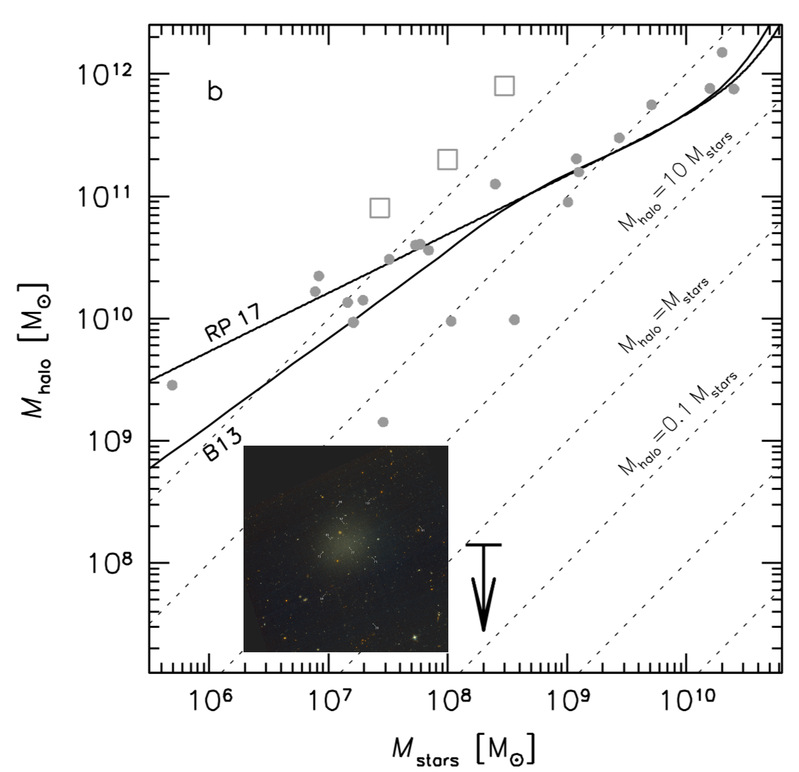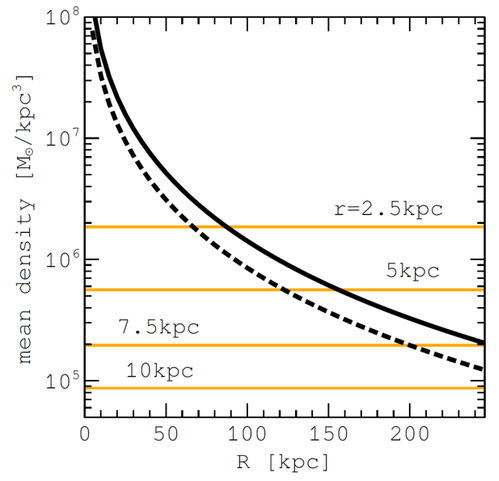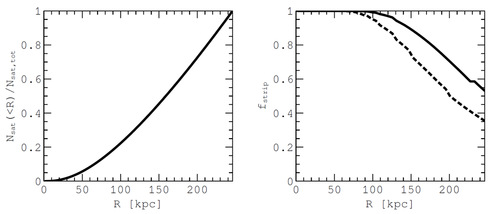Dark matter deficient galaxies are a very unique type of galaxy discovered in recent years (van Dokkum et al. 2018), whose formation mechanism is unclear and poses a threat to the standard cosmological model, attracting widespread attention from astronomers. Recent studies have proposed possible mechanisms for its formation, such as galaxy collisions triggering the formation of dark matter deficient galaxies. Recently, a research team led by researcher Go Ogiya from the School of Physics at Zhejiang University discovered that the mechanism of galaxy collisions is also problematic, so the formation of such galaxies remains a mystery. This work has been published in the top astronomical journal: American Astrophysical Letters(Astrophysical Journal Letter, https://doi.org/10.3847/2041-8213/aca2a7)
Dark matter is an unknown and mysterious substance in the universe, playing a crucial role in the formation of different levels of cosmic structures. Due to the fact that dark matter accounts for 85% of the total matter in the universe, baryonic gas is pulled into the gravitational potential well formed by dark matter, and then gathers at the center of the dark matter halo, ultimately collapsing and condensing to form stars. The standard image of the formation of this galaxy is expected to be enveloped by their dark matter halo, and their dynamic mass is dominated by dark matter.
However, recent observations have found that there are galaxies (DMDG) near the large elliptical galaxy NGC1052 that are significantly lacking in dark matter. The dynamics of these galaxies are entirely described by the gravitational pull generated by stars, indicating that they do not contain or contain very little dark matter. The inferred dark matter mass through observation is several hundred times lower than the expected theoretical model (Figure 1). This astonishing discovery poses a serious challenge to our current understanding of galaxy formation and evolution. Therefore, DMDG has attracted the attention of many astronomers.

Figure 1: Galaxies on the Mstar Halo plane, where Mstar and Mhalo represent the stellar mass and dark matter halo mass of the galaxy, respectively. Theoretical models for galaxy formation and evolution predict that Mhalo is a function of Mstar (black line). Typical dwarf galaxies (gray circles and hollow squares) follow this relationship. However, compared to theoretical expectations, the dark matter indicated by the black arrow lacks too little Mhalo in the galaxy DF2. The image is taken from van Dokkum et al. (2018).
Scientists have proposed several mechanisms to explain the formation process of DMDG, one of which is that approximately 8 billion years ago, two gas rich dwarf galaxies collided near NGC1052 at a relative velocity of 350km/s (Figure 2), one of which was a dwarf galaxy bound by NGC1052 and the other was an intruder. Due to fluid dynamics interactions, high-speed collisions of galaxies strongly compress the gas stored in the colliding galaxies and trigger explosive star formation. Meanwhile, dark matter will pass through the gas because it only interacts with other substances through gravity. Therefore, galaxy collisions separate gas and newborn stars from dark matter, forming DMDG.

Figure 2: Collision induced formation mechanism of dark matter deficient galaxies (labeled DF2 and DF4) proposed by van Dokkum et al. 2022. Two dwarf galaxies collided 8 billion years ago, and their stars were ignited in dark matter free gas clouds. Subsequently, the gas cloud shattered, forming multiple galaxies lacking dark matter.
Our article attempts to test this explanation using globular clusters observed in galaxies lacking dark matter (globular clusters are dense structures composed of a large number of stars). Firstly, we consider the orbital evolution of globular clusters within galaxies. Large objects moving in galaxies will experience resistance caused by other stars and dark matter (if the galaxy contains dark matter), known as dynamic friction. Due to dynamic friction, the orbits of globular clusters will decay, and their spatial distribution will become more compact over time. This indicates that their past spatial distribution should be more extended than what is currently observed (with a projection scale of 3kpc). Using a semi analytical model, we traced the orbital evolution of globular clusters and found that 8 billion years ago, the distance from these globular clusters to the center of dark matter deficient galaxies was 5-10 kpc.
We will further investigate whether globular clusters are sensitive to tidal forces in the host galaxy NGC1052. DMDG is certainly influenced by NGC1052, as they are formed within its gravitational potential (see Figure 2). The strong gravity of NGC1052 can detach globular clusters from galaxies lacking dark matter (through tidal forces). Spherical clusters located on the outer periphery (larger r) of DMDG are more susceptible to tidal forces than those located at the center, making them more susceptible to detachment (Figure 3).

We will further investigate whether globular clusters are sensitive to tidal forces in the host galaxy NGC1052. DMDG is certainly influenced by NGC1052, as they are formed within its gravitational potential (see Figure 2). The strong gravity of NGC1052 can detach globular clusters from galaxies lacking dark matter (through tidal forces). Spherical clusters located on the outer periphery (larger r) of DMDG are more susceptible to tidal forces than those located at the center, making them more susceptible to detachment (Figure 3).
The location of galaxy collisions is actually the birthplace of DMDG, which is another factor determining the efficiency of tidal detachment. Due to one of the precursor galaxies being considered a satellite galaxy of NGC1052, we used numerical simulations based on cosmological backgrounds to consider the distribution of satellite galaxies (Figure 4, left). Half of the satellite galaxies are located in R< 150kpc. The DMDG formed feels stronger tidal forces at the center of NGC1052 than at the periphery. By combining the analytical model of tidal exfoliation (Figure 3) and our semi analytical model to obtain the probability distribution of globular cluster positions, we found that when dark matter deficient galaxies are located at R=150 kpc, 80-90% of globular clusters will be exfoliated (as shown in Figure 4, right).

Figure 4: (Left) The ratio of the cumulative number of satellite galaxies contained within R. (Right) The rate at which globular clusters are stripped when dark matter deficient galaxies are located in R. Half of the satellite galaxies are located in R< 150 kpc, and at that location, tidal forces reduced the number of globular clusters by 5-10 times.
Our work indicates that during the formation of DMDG, a significant portion of globular clusters should be stripped away by the tidal forces of NGC1052. To explain the current number of globular clusters observed in dark matter deficient galaxies (approximately 10), the galaxy should have more globular clusters during its formation. This may be a potential issue with the collision induced formation mechanism. The use of high-resolution numerical simulations is an interesting way to further explore this scenario.
This work is led by Researcher Go Ogiya from the School of Physics at Zhejiang University. Participants include Professor Kangxi from our university, Professor Frank Van den Bosch from Yale University in the United States, and Professor Andreas Burkert from the University of Munich in Germany. This work has received funding from the Ministry of Science and Technology for key research and development, the National Natural Science Foundation of China, and the Zhejiang University Innovation 2.0 team.



